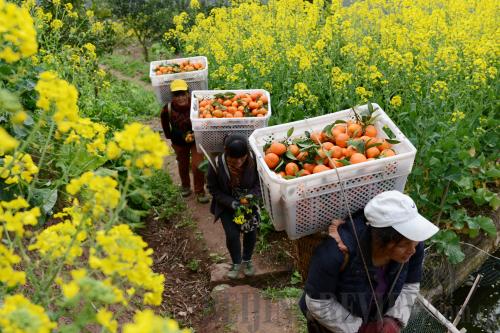|
 |
|
JUICY FRUITS: Farmers carry oranges in Yunyang County, southwest China's Chongqing Municipality. The county has 80,000 mu (5,333 hectares) of orange trees, and oranges are sold to Beijing, Shanghai and southeast Asian countries (LIU YANG) |
Walmart Backing Off
The world's largest retailer, Walmart Stores, closed an outlet in southwest China's Chongqing Municipality on March 4.
A staff member, who declined to be named, said the closure was decided by Walmart China because the store had been losing money for a long time. Poor site selection has been given as a major reason for the store's slow trade.
Walmart entered Chongqing 10 years ago, and this was its first closure in the city.
Walmart China closed 10 stores nationwide in November and December last year.
The emergence of online shopping has been seen as an increasing challenge for firms like Walmart. Walmart's stores also face competition from local retailers. Chinese grocery retailer Yonghui Superstores has been in talks to rent the site that Walmart has vacated in Chongqing.
New Trading Model
No timetable has been set for the launch of the T+0 trading model, a tool to increase the vitality and liquidity of the capital market, according to a securities watchdog official.
T+0 means financial products can be bought and sold on the same day. "T" stands for the first letter of the word "trade."
There are no legal barriers, but the trading model needs smooth coordination, said Wang Xian, deputy head of the China Securities Regulatory Commission's market department.
The model can stimulate the market and add fluidity, but can also cause frequent trading, market fluctuation, speculation and manipulation, Wang said.
Currently, T+1 is adopted for share trading on the Shanghai and Shenzhen bourses. T+1 means shares bought on one day can only be sold the next trading day at the earliest.
The Shanghai bourse in 1992 and the Shenzhen bourse in 1993 introduced T+0 models, but they shifted to T+1 in 1995 to guard against market risks. | 